 Abraham Lincoln
If given the truth, the people can be depended upon to meet any national crisis...
Abraham Lincoln
If given the truth, the people can be depended upon to meet any national crisis...
 Guildford news...
for Guildford people, brought to you by Guildford reporters - Guildford's own news service
Guildford news...
for Guildford people, brought to you by Guildford reporters - Guildford's own news service
The Night David Bowie Brought Ziggy Stardust To Guildford
Published on: 11 Jan, 2016
Updated on: 11 Jan, 2016
Former journalist Dave Reading looks at the allure of David Bowie, who has died aged 69, and recalls one of the most memorable nights in Guildford’s rock ‘n’ roll history.
The audience was waiting for Bowie but what they heard before the curtain went up was Beethoven.
The opening music for David Bowie’s Ziggy Stardust Tour, which reached Guildford Civic Hall on May 27, 1973, was a majestic electronic recording of Beethoven’s Ode to Joy. Both grand and futuristic, the piece was a perfect scene-setter for the show we were about to see.
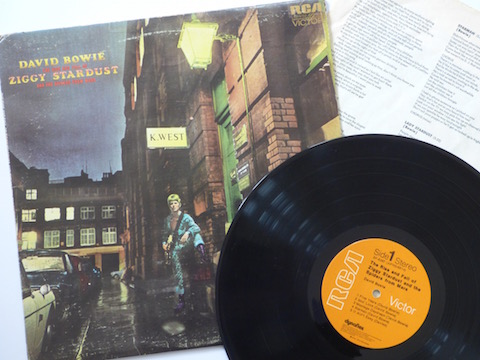
The classic album, The Rise and Fall of Ziggy Stardust and the Spiders From Mars, that David Bowie performed at Guildford Civic Hall on May 27, 1973.
In this groundbreaking tour, Bowie acted the role that made him a star – Ziggy Stardust, the mythical rock ‘n’ roll starman with the “screwed up eyes and screwed down hairdo;” the “leper messiah” who “played it left hand, but made it too far”.
That Beethoven intro – recorded by the experimental musician Walter Carlos using a new device called a spectrum follower – is said to be the first electronic vocal piece. The audience clapped along waiting for the band to appear and suddenly there was Bowie, lit up by a strobe, standing seductively in a blue-grey check jumpsuit. The band launched into Hang Onto Yourself from the Ziggy album and the fans went crazy.
Everything was different about this gig, even the clothes Bowie wore. In itself, the idea of wearing outlandish stage gear wasn’t new but Bowie – sexually ambiguous, prancing about on stage like a mischievous pixie – had taken the concept further than ever before.
That moment on Top of the Pops where he had draped one arm around guitarist Mick Ronson’s shoulders is often cited by music writers as a key moment. Few men behaved like that on TV in 1972 and certainly not on a prime time family show. Music writer Dave Thompson felt it was a display that “jumpstarted teenage hormones the length and breadth of the land.” Bowie was bringing a new face to rock ‘n’ roll and that was clear to that Guildford audience back in 1973.
The notion that Ziggy is a concept album with a story to tell is fully ingrained in the minds of many fans. It’s not a happy story. The year 1972 – when the album was released – came during a time of frightening international tension: five years after the Six Day War, four years after the Soviet invasion of Czechoslovakia and the year before the Yom Kippur War which began with an Arab attack on Israel. Vietnam was aflame and Nixon was President.
The album’s opening track Five Years sets a disturbing scene with the lyrics: “Pushing thru the market square, So many mothers sighing, News had just come over, We had five years left to cry in. ”
So the beginning of the story is clear: the world is in a mess and something has got to happen fast. Some writers have suggested the Ziggy character was devised as an alien who became a rock star here on earth. He carried a message of peace, but was destroyed by his own ego, his excesses of drugs and sex, and the fans he inspired.
The desolation pictured in some of Bowie’s early songs led people to think that maybe they were a reflection of the guy who wrote them and acted the role. Was Ziggy one of Bowie’s alter egos – one of his multiple personalities who emerged over the years – with the implication that there was something not quite right about him? Did he need to construct his various doppelgangers and wear outrageous disguises in order to escape the madness within? Or was he just a great showman?
Paul Trynka, ex Mojo magazine editor, makes some interesting points about the development of the Ziggy album in his biography Starman. People tend to think the story was mapped out in advance as a concept album. In reality, says Trynka, this wasn’t the case. At the beginning they were simply recording a bunch of songs, some of which fitted together, others that didn’t work. Early on, the album was starting to sound like ‘50s rock ‘n’ roll. A cover of Chuck Berry’s Around and Around (which the Stones had recorded for an EP in 1964) featured in the early track listing and there were also touches of Gene Vincent.
Trynka writes: “The straight ahead rockers – Hang On To Yourself and Suffragette City – took Eddie Cochran’s teenage rebellion as a model, with the same mix of acoustic and electric guitars, as well as liberal musical quotes from Something Else.” But where Cochran spoke to kids about breaking parental bonds, Ziggy’s message was about sexual liberation.
According to Trynka, the central concept – Ziggy’s rise and fall – arrived late in the day. This was Bowie’s “homage to the outsider”, partly inspired by the singer Iggy Pop, partly by another strange character: an obscure rock ‘n’ roll singer named Vince Taylor. Although living in the US, Taylor was actually born Brian Maurice Holden in London in 1939. He claimed to be a composite of the Son of God and an alien. He carried a crumpled map showing the places where spaceships were going to land. This was the kind of character who caught the imagination of the young Bowie.
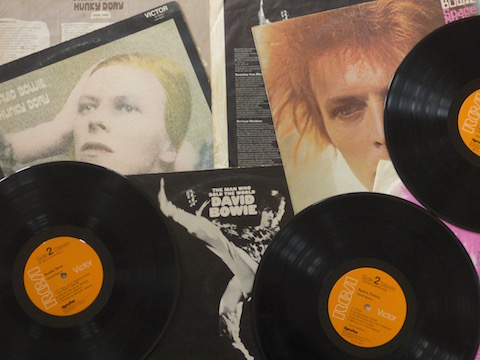
Other David Bowie albums released prior to Ziggy Stardust and now classics in their own right. In the early 70s he played tracks from these albums on his tours.
Other sources of inspiration were a mixed bag. The story goes that the young David Jones, as he was then, was sitting in his little terraced house in the suburb of Bromley sometime in the 1950s, when his dad walked in with a bag full of rock ‘n’ roll records. That night David played them all: starting with Fats Domino, Chuck Berry, the Platters and Frankie Lymon and the Teenagers. Then he hit gold. The song that marked his eureka moment was Little Richard’s Tutti Frutti. He was eight or nine at the time.
“My heart nearly burst with excitement,” he was quoted as saying. “I’d never heard anything even resembling this. It filled the room with energy and colour and outrageous defiance. I had heard God.” More than anyone else, Little Richard would be the guiding light of Bowie’s music and stagecraft – the irresistible combination of sex, glamour and thrilling rock ‘n’ roll music.
Then a more unlikely role model enters the story. In October 1960, when Bowie was in his early teens, a six-part TV series called The Strange World of Gurney Slade was transmitted on British television.
This dream-like half-hour comedy baffled most prime time viewers. It had more in common with avante garde foreign cinema than with the average TV comedy show. If anything it belonged in the surreal fantasy worlds of Lewis Carroll or Spike Milligan.
The lead character, Gurney Slade, begins the first episode by walking out of a sitcom, to the consternation of the crew and the rest of the cast. He spends the series in a kind of limbo, moving in and out of reality whilst having conversations with inanimate objects, animals or people who have stepped out of advertising posters.
The show was too bewildering to keep its prime time slot. But one viewer who was obsessed with the show was the young David Jones, who became equally fixated on its star, the multi-talented actor, singer and songwriter Anthony Newley.
From childhood until his death in 1999, Newley’s showbiz range was astonishing: playing the role of the Artful Dodger in Oliver Twist in 1948; the singer of seven top 10 singles including the chart-topper Do You Mind; writer of songs for Sammy Davis Jr, Shirley Bassey and Tony Bennett; and composer of stage musicals.
Today Newley’s hit singles would be dismissed as easy listening or novelty tunes. This was not the cutting edge of rock ‘n’ roll. And yet Bowie held him up as an early role model. He always determined to be a performer and entertainer above all else and Newley fitted the bill.
Those people in the recording industry who first took an interest in Bowie noted that, with his singing voice, they had an Anthony Newley Mark II on their hands. That was no coincidence because Bowie had worked at it.
Was Bowie truly a rather weird outsider as his multiple images suggest or was he, like Anthony Newley, simply a showbiz pro who knew how to make his career work? There is evidence for both. Either way, the quality of his music cannot be questioned. Over more than four decades, Bowie’s influence swept across many cultural boundaries. Just about every musical form since the early ‘70s has got Bowie’s mark on it.
The two Guildford dates (there was a matinee and an evening performance) were part of a world tour that took in just over 100 performances from January to early July. Although this was 43 years ago, there are still highlights I remember well: the manic energy in the rockier numbers such as Suffragette City; Mick Ronson’s howling, Jeff Beck-inspired guitar; above all, Bowie’s dazzling showmanship. Long before the band reached the final number, Rock ‘n’ Roll Suicide, the place was in uproar.
After Bowie’s death was announced today (January 11), a friend said to me: “If it wasn’t for Bowie, we’d all still be listening to the same old rubbish.” An exaggeration perhaps, but not too far from the truth.
Did you see David Bowie and his band play Guildford Civic Hall in 1973 on their Ziggy Stardust Tour? If so and you have some memories, please leave a reply in the box below.
Responses to The Night David Bowie Brought Ziggy Stardust To Guildford
Leave a Comment Cancel reply
Please see our comments policy. All comments are moderated and may take time to appear. Full names, or at least initial and surname, must be given.Recent Articles
- Children’s Charity Gets Into Gear For Its Big Annual Motoring Event
- Council Hopes New ‘Pump Track’ for Farnham Will Attract BMX Riders
- More Support Than Objection to School’s Floodlit Sports Pitch Proposal
- City Out of FA Cup After Replay
- Police Seek Witnesses to ‘Altercation’ at Caribbean Festival
- Spelthorne Councillor Repeats Plea to Home Office Not to Use Hotel for Asylum Seekers
- Dragon Interview: Cllr Townsend on Waverley’s CIL Issue
- Dragon Review: The Last Laugh – Yvonne Arnaud Theatre
- Last Chance for a Say on Local Government Reform
- Researchers Urge Reformed Suicide Prevention Approach



Recent Comments
- Jim Allen on Letter: Who Will Defend Guildford’s Allotment Holders?
- George Potter on Letter: Who Will Defend Guildford’s Allotment Holders?
- Simon Higgins on Borough Council Hears Plea To Take a Moral Stand Over Gaza
- Joseph Stuart on Letter: Who Will Defend Guildford’s Allotment Holders?
- Frank Emery on Highways Bulletin: Smarter Traffic Lights, Smoother Journeys
- Norman French on Letter: Who Will Defend Guildford’s Allotment Holders?
Search in Site
Media Gallery
Dragon Interview: Local Artist Leaves Her Mark At One of England’s Most Historic Buildings
January 21, 2023 / No Comment / Read MoreDragon Interview: Lib Dem Planning Chair: ‘Current Policy Doesn’t Work for Local People’
January 19, 2023 / No Comment / Read MoreA3 Tunnel in Guildford ‘Necessary’ for New Homes, Says Guildford’s MP
January 10, 2023 / No Comment / Read More‘Madness’ for London Road Scheme to Go Ahead Against ‘Huge Opposition’, Says SCC Leader
January 6, 2023 / No Comment / Read MoreCouncillor’s Son Starts Campaign for More Consultation on North Street Plan
December 30, 2022 / No Comment / Read MoreCounty Council Climbs Down Over London Road Works – Further ‘Engagement’ Period Announced
December 14, 2022 / No Comment / Read MoreDragon Interview: GBC Reaction to the Government’s Expected Decision to Relax Housing Targets
December 7, 2022 / No Comment / Read MoreHow Can Our Town Centre Businesses Recover? Watch the Shop Front Debate
May 18, 2020 / No Comment / Read More



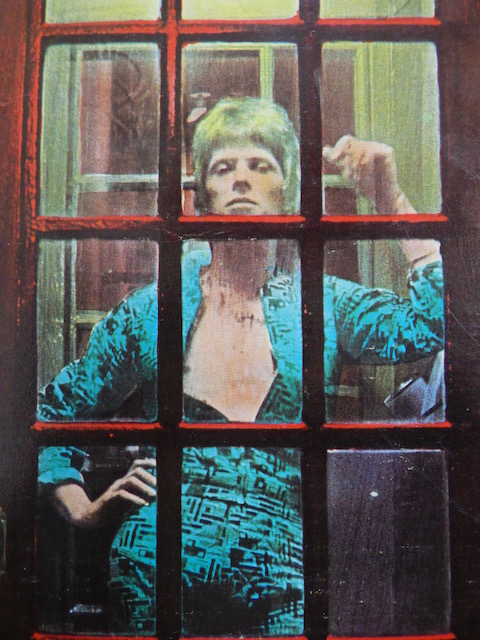
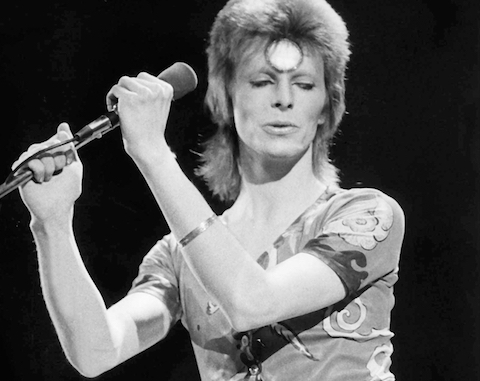






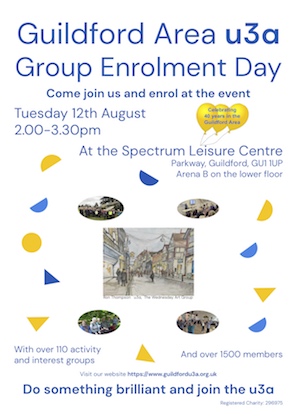


Suzanne Wheeler
January 15, 2016 at 3:05 pm
I am so proud, honoured and pleased to say that I saw David Bowie in 1973.
I lived in Guldford very close to where he was about to perform at the Civic Hall.
After following him and his music I could not wait and at 16 years old I just could not believe how lucky I was.
I waited at the back of the old Civic Hall with just a few other people to watch him jump quickly out of his car in jeans and jumper with his bright orange hair and run up the steps.
When the concert began I stood holding the stage and noticed Bowie wearing clear nail varnish and I was just mesmerized.
I really loved that man to bits and it was just after my dad had died and he has always been so special and I just can not explain the shock I felt when I heard of his death.
I do feel a part of me has gone now too. RIP David Bowie in my heart forever. Your music will live on.
Sue x
Nick
January 15, 2016 at 7:39 pm
I was at the Bowie’s Guildford Civic Hall gig on 27th May 1973.
As the Beethoven intro faded, everyone was still politely sitting in their seats.
I made a mad dash and was first to the front of the stage as the band came on.
I looked up and saw Mick Ronson towering above me……I reached out my hand, and he leant down and shook it!
The concert was sensational.
(Nick, formerly of Haslemere).
David Pillinger
July 3, 2016 at 11:01 am
Too young to have made it to the Ziggy concerts (only 11 years old) but if I could back in time this is what would be top of my list. A big Bowie fan from that age, been to about six concerts since and sad I will not be attending any more.
Víctor Manuel Navarro
January 17, 2019 at 2:08 pm
I saw David Bowie at the Civic Hall with hundreds of fans imitation his look. I remember that my mother didn’t let me use her make-up and I used black and blue shoe polish instead. I wore dungarees fully embroidered with nothing underneath except my underwear and a denim overall shirt with embroidery too of palm trees. Nothing was too much for Bowie.
Allen Moss
June 14, 2020 at 9:00 pm
DNP name sought
I remember going to that concert, Sunday, May 27 1973. I went with two friends and we were queuing up three hours before doors opened. There were so many people that he had to do two shows.
When queuing a lot of people had the Alladin Sane slash down their face and there was also a lot of weird dress. I noticed two guys had dressed with different coloured toilet roll on their arms.
We managed to get to the front when the concert started and David didn’t disappoint. One of the best concerts ever at the Civic amongst a lot of other famous names who now only perform at large venues.
So sad when the original Civic was pulled down.